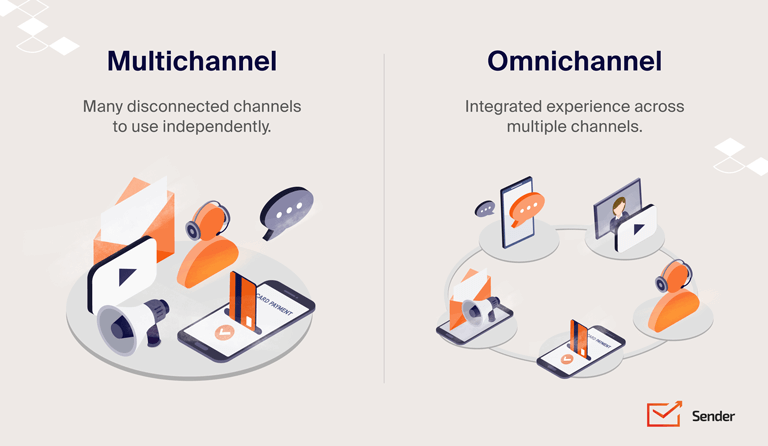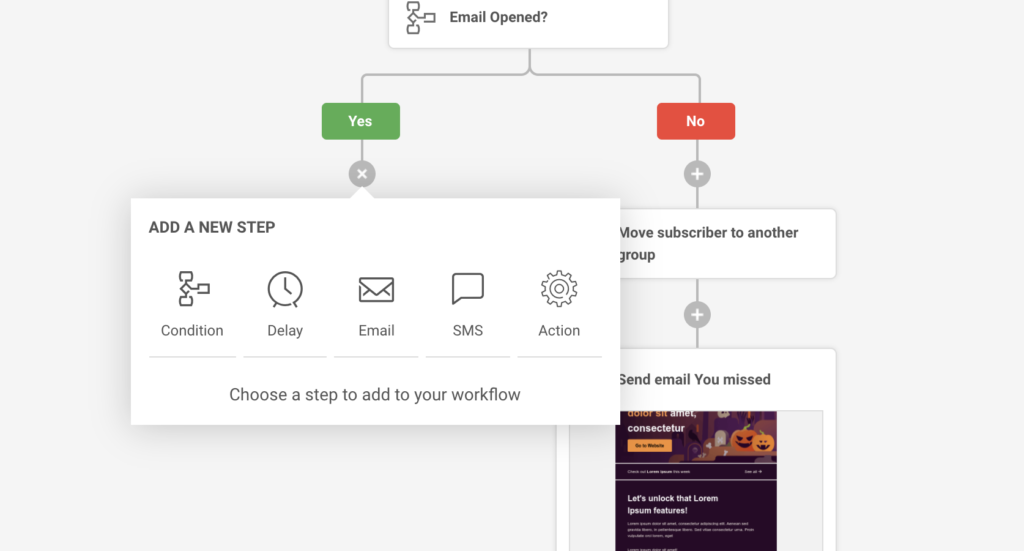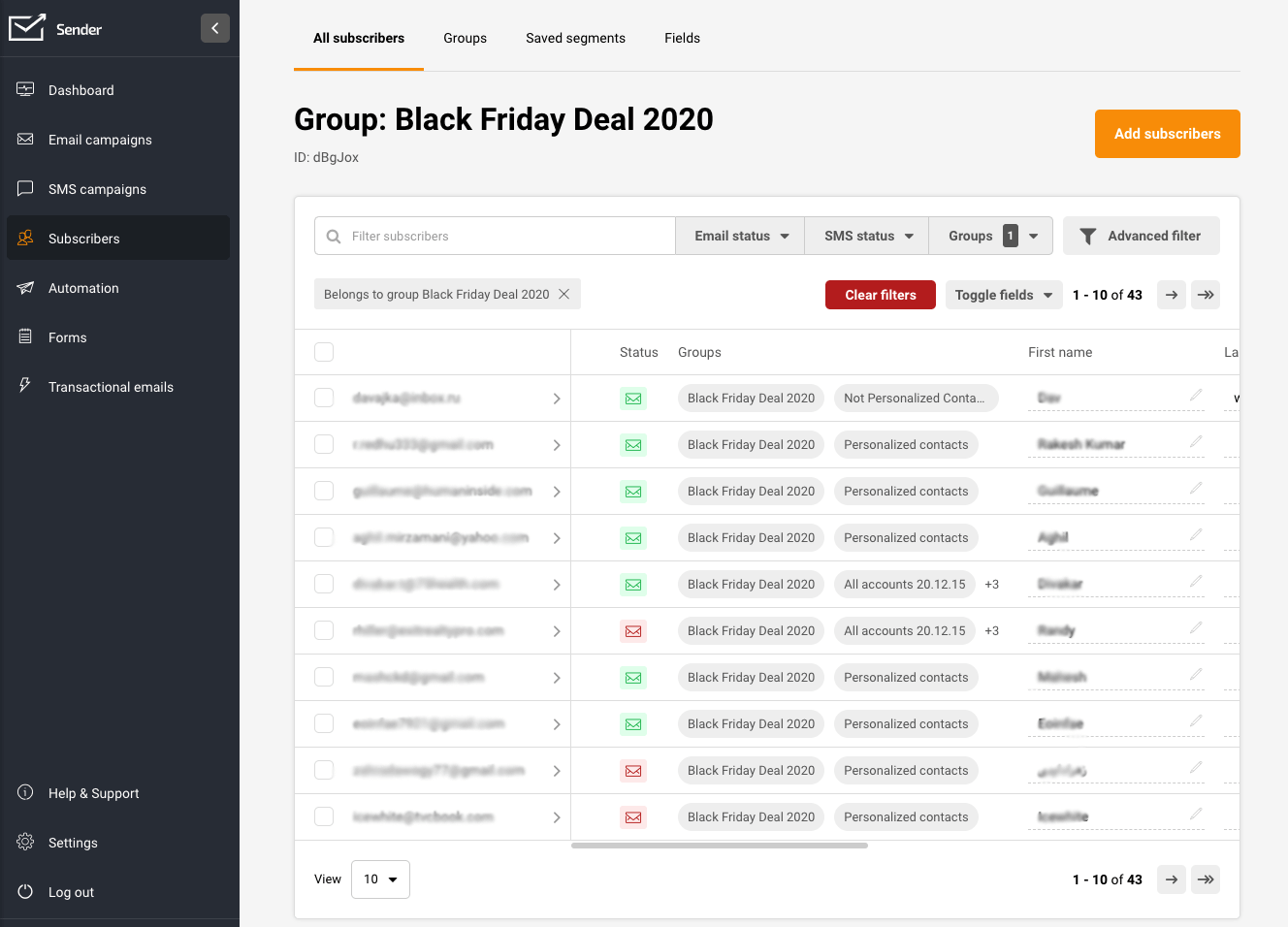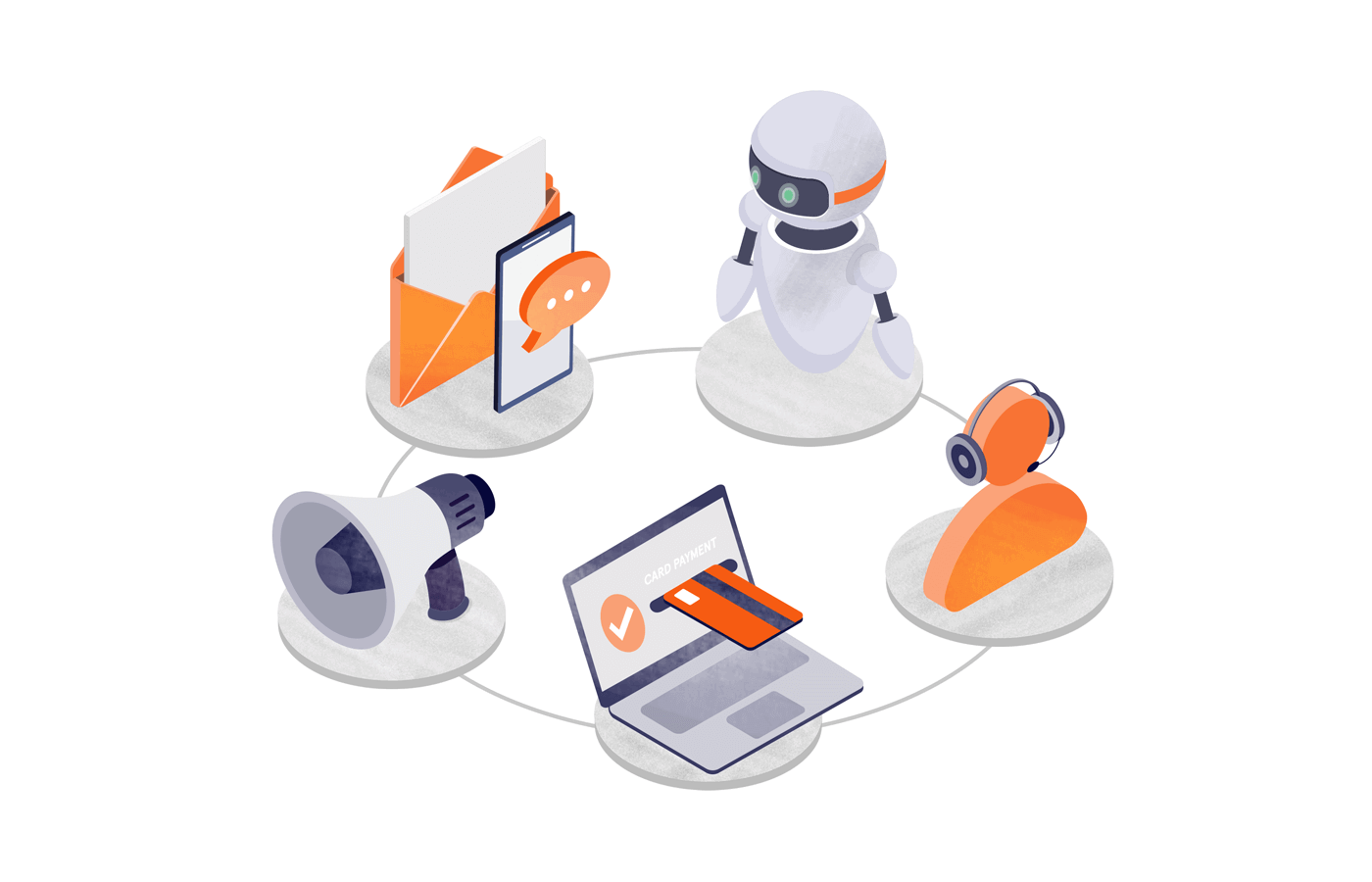Your customers don’t buy how you want (or imagine) them to. They won’t buy instantly, will browse for options across multiple devices or places, and need constant nudges and reminders to act. Nearly 90% of shoppers expect a brand to offer an omnichannel experience across online and in-store touchpoints.
Omnichannel customer engagement is essential in a world where consumers discover a product on social media, research for reviews online, and check out inside a physical store or on an ecommerce platform.
In this blog post, we’ll explore how to build an effective omnichannel marketing automation strategy to boost customer delight and ensure increased checkouts.
What is Omnichannel Marketing?
Omnichannel marketing isn’t a new magic pill to solve all your marketing woes, but it’s the most effective tactic to offer a unified experience to consumers (which they want).
- Today, about 70% of consumers research and shop across offline and online platforms.
- Over half the shoppers engage with 3-5 channels each time they buy something.
Consumers move across channels looking, browsing, or shopping for the same thing. Effective omnichannel marketing occurs when you understand consumers’ preferences in each cross-interaction and provide personalized content, experience, and solutions at that particular channel.
Offering an omnichannel marketing experience involves serving customers across all the channels in the same way, no matter where they reach out or interact.
Research reveals if a prospect encounters inconsistent information across platforms or can’t get what they expect, they may lose interest (and you risk losing a sale).
Omnichannel marketing ensures your potential customers get what they want by optimizing your messaging across platforms for consistency.
For example, when customers switch between social platforms and websites to check the rates and features, they match your proposition. Also, the marketing must appeal to their specific interests, perspectives, and needs across channels, which requires targeted personalization.
Today, 87% of retailers believe that omnichannel marketing is crucial for the success of their business. That’s because an omnichannel customer shops 1.7 times more than a customer who uses a single channel. So, consistency across platforms and personalization for creating a unique experience increase the ROI and the prospect of adding loyal customers to your business.
Omnichannel vs. Multichannel
You might be wondering if there’s any difference between omnichannel and multichannel marketing. Don’t get confused because both are different in principle and execution.
Omnichannel marketing connects the customer experience across platforms to provide a unified experience. Whereas multichannel marketing involves being active on different channels (without synchronizing or connecting the efforts). Here are the major differences between omnichannel marketing and multichannel marketing:
| Omnichannel Marketing | Multichannel Marketing | |
| Customer Experience | Provides a unified experience across channels with consistent customer experience and messaging | Offers multiple touchpoints for customer engagement without synchronization |
| Integration | Integrates various channels into a cohesive strategy, enabling smooth transitions | Utilizes different channels independently, resulting in fragmented experiences |
| Personalization | Collects and analyzes customer data across channels, enabling personalized marketing | Data is collected independently, limiting understanding and personalization |
| Complexity | Requires organizational coordination and infrastructure for consistent messaging | Relatively simpler to implement but may result in siloed efforts |
| Engagement | Facilitates seamless engagement through synchronized messaging and personalized experiences | Offers multiple channels but lacks continuity and coordination |
In short, all omnichannel campaigns can be multichannel campaigns, but all multichannel campaigns aren’t necessarily omnichannel campaigns.

Omnichannel marketing automation helps business owners turn their multichannel efforts across the website, blog, social media, and email into cohesive omnichannel campaigns that promise personalized experiences.
Now that the difference is clear, let’s look at the benefits and importance of omnichannel marketing.
Importance of Omnichannel Marketing Automation
Enchanting shoppers across platforms and speeding the checkout process is an important element of an omnichannel marketing automation strategy. Here are the benefits of omnichannel marketing automation:
- Higher reach. Omnichannel marketing helps reach where your customers are, increasing your overall reach. When you’re at different platforms, it increases your chances of discovery and ultimately makes it easier for prospects to engage and interact with your business.
- Increased revenue. When you offer a seamless experience across multiple channels, it becomes convenient for customers to purchase. Fewer barriers to purchase, enhanced accessibility, and convenience result in repeat purchases, improved customer retention, and increased customer loyalty, boosting revenue.
- More satisfied customers. Omnichannel marketing automation allows you to offer excellent customer service and support. Multiple channels to reach your sales and customer service teams, such as chat, phone, or email, help to meet the expectations. Customers appreciate having personalized options to interact and are likelier to stay loyal and recommend your business to others.
- Offer personalized experiences. Omnichannel marketing automation allows you to gather and leverage customer data from various touchpoints. The data can be used to create personalized marketing campaigns and tailored experiences based on customer preferences, behaviors, and purchase history across channels. Personalization enhances customer engagement, increases relevance, and ultimately improves conversion rates.
- Gain competitive advantage. Omnichannel marketing automation allows you to differentiate yourself from competitors, focusing on scattered marketing approaches. Providing a cohesive and consistent brand experience across channels positions your business as forward-thinking and customer-centric.
How to Build an Omnichannel Marketing Campaign?
A large part of the omnichannel marketing automation puzzle is about providing a great customer experience to the end customer. This involves offering convenience, and consistency across channels, staying relevant through personalization, empowering customers, and adapting to changing customer behaviors.
Let’s explore how to ace every element of the customer experience through the omnichannel marketing automation process.
Step 1: Map the Existing Customer Journey Experience
Before you start, you must understand the existing customer journey — where your customers are, their online behavior, and journey flow. Map out how they find, interact, and engage with your business across platforms, then outline how you want them to do.
Fill the gaps in the customer experience and buyer’s journey based on their existing behavior. See if there are channels you’re missing out on or ways to nurture the leads. For example, if they discover you first via Google Search and spend time on your blog, but you don’t have a popup or embedded form to collect their email, start there.
Similarly, start offering a seamless experience to move buyers further into the funnel everywhere they find you online.
Step 2: Gather Data For Omnichannel Marketing Campaigns
Next, you must start gathering and sorting data related to your customers and prospects. Use your CRM, online store, social listening tools, email marketing platform, social media marketing insights, etc., to know everything about your customer:
- How much time do they spend on the website?
- What kind of posts do they engage with?
- Where do they spend the most time?
Things like this will help you understand how they behave, what they perceive, and what they expect of you. This will also help you find the right channels to add to your omnichannel strategy.
Picking the right customer engagement channels and optimizing the experience is crucial for success. Customer engagement data lets you prioritize the channels where they’re most active.
PRO TIP: Find out where the customers find you or contact you online and prioritize the channel the most in your omnichannel strategy. Then, optimize your copy, offer, positioning, and other channels accordingly.
Step 3: Pick the Right Marketing Automation Tool
You will need a powerful marketing automation solution to succeed with your omnichannel marketing efforts. Picking a solution that’s easy to use, provides automation templates, and connects all your efforts is the right way to go ahead.
You might think — but marketing automation tools will only help me automate emails. That’s not entirely true. Marketing automation solutions act as a bridge between your marketing and sales efforts.
Using the right marketing automation tool will help you capture leads, nurture them into interested prospects, and convert them into actual customers. Automate recurring tasks, scale up lead generation efforts and personalize campaigns across channels with the right marketing automation solution.

For instance, with Sender, you can set up email and SMS automation which creates a great omnichannel experience. The best part is that using Sender for up to 2,500 subscribers doesn’t cost a penny.
Read More: 17 Best Marketing Automation Tools (Free & Paid)
Step 4: Create a Unified Customer Database
Customer data and information are scattered across multiple dashboards and platforms. There’s your Shopify/eCommerce dashboard, CRM, email marketing platform, social media dashboards, and more.
To succeed with omnichannel marketing automation, all your customer data must be visible on a single screen. Marketing automation dashboard connects everything and helps you use customer data to:
- Gain a comprehensive overview of customer behavior across various channels;
- Enable seamless & personalized narrative consistently across all channels;
- Drive relevance using unified and segmented customer groups;
- Achieve brand and messaging consistency across channels like email, SMS, social media, etc.;
- Optimize & measure marketing success to analyze the effectiveness of different channels, campaigns, and touchpoints and identify what works best for your audience.
Step 4: Segment and Target Your Audience
You’ve got the data insights, you’ve got your audience on a single platform, you’ve got the plan. Now, it’s time to segment your audience.
Segmentation involves dividing and categorizing your audience into specific groups based on their behavior, interests, demographics, channel of engagement, or any other factors to enhance relevance and promote personalization.
When you’ve got all the data and your audience on a single platform, start creating audience lists based on their interests or common behavior.
For example, look at how Sender lets you create and manage a custom audience list quickly:

Also read:
- What is Customer Segmentation? Definition, Examples & Tools
- What is Behavioral Segmentation: Definition, Types & Examples
Step 5: Personalize and Target Specific Customer Groups
The most challenging part of omnichannel marketing campaigns is setting the context right and personalization. Sending the wrong message to the wrong audience group at the wrong time can lead to lost opportunity.
So, you must create strategic campaigns and personalize them based on the channel of engagement, customer interests, and customer journey stage. Always ensure the context is relevant to the user and schedule your campaigns to send to the right platform at the right time.
PRO TIP: To make the most out of your omnichannel efforts, always align your outreach strategy to appear helpful (and not intrusive). Even when you’ve got all the data to target customers across multiple channels, send campaigns only when they’re relevant and most convenient for them to engage with. Scheduling campaigns using marketing automation can save you from appearing ‘sneaky’ in the eyes of your audience.
Also read: Defining Your Target Audience: Showcasing with Examples
Step 6: Measure Omnichannel Marketing Strategy Results
You segment, personalize, and schedule campaigns across platforms using a marketing automation solution. But your work doesn’t end with that. The effectiveness can only be measured when you track, monitor, and analyze the results.
When you pick the right marketing automation tool for omnichannel campaigns, your analytics dashboard will give you a comprehensive overview of engagement, interactions, conversions, and more.
Use the detailed reports as a goldmine of insights on what to focus on and how to optimize your efforts and boost your revenues.
Using Omnichannel Marketing Automation to Improve the Customer Journey
Amazon has adopted an omnichannel approach for growth that’s worked pretty well so far. They’ve built their omnichannel marketing strategy on the following pillars:
- Flawless user experience;
- Impeccable and prompt customer service;
- Innovative advertising campaigns;
- Diversified initiatives across different channels and mediums
You can also improve your customer journey using marketing automation by getting inspired from Amazon. Here’s how to use it to your benefit:
- Audit all existing marketing channels, engagement touchpoints, and mediums;
- Analyze how customers interact with your brand and make a purchase decision;
- Segment your audience based on behavior, activity, or attributes;
- Personalize content for each channel like SMS, email, push notifications, etc.
- Retarget to deliver the right message at the right time and build top-of-the-mind brand recall;
- Utilize a powerful marketing automation tool to create automated omnichannel marketing workflows;
- Always test, measure, optimize, and repeat the tactics that deliver the most suitable outcomes.
Key Takeaways
Your omnichannel strategy helps you deliver an exceptional customer experience and makes your brand approachable. Whenever thinking of an omnichannel marketing strategy, remember to:
- Research your market and existing audience before finalizing channels or omnichannel marketing;
- Ask your marketing teams to conduct a customer survey to understand gaps within the existing customer journey;
- Use segmentation and personalization tools to increase relevance and set the right context across different platforms;
- Test multiple marketing automation tools before picking one for your omnichannel marketing strategy.
Also read: What is Cross Channel Marketing? Definition & Examples
Author Bio
Anmol Ratan Sachdeva is a content marketer and small business consultant who has a strong grip on topics like marketing automation, email marketing, and content marketing. He loves to write about building, improving, and growing a business.





